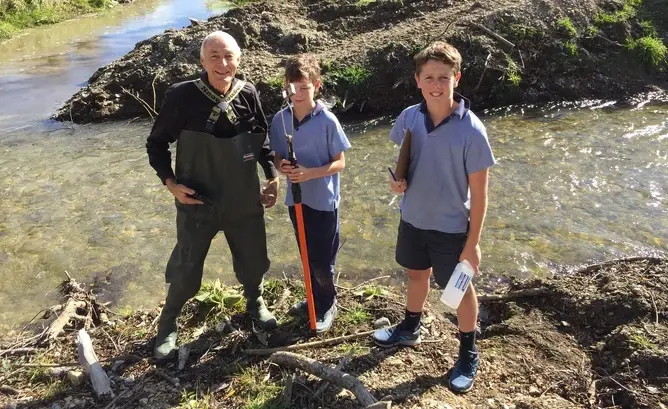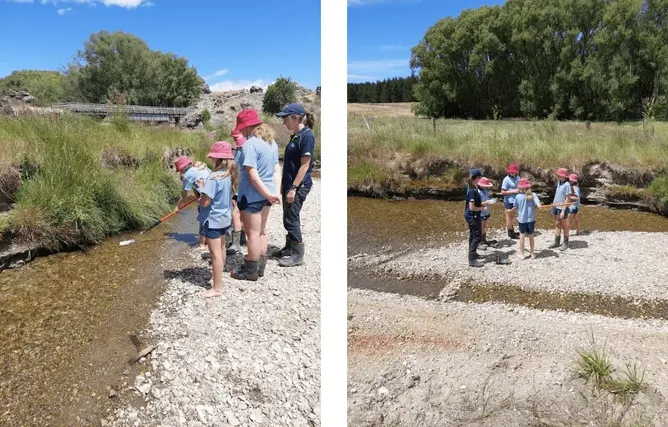Omakau School supports local environment
Alexia Anderson
03 January 2024, 4:45 PM
 Ready to plant kōwhais are Omakau School pupils (from left) Sophie Groundwater, Milly Gillespie, Charlotte Kirk, McKenzi Hamilton and Pip Tucker. PHOTO: Thomsons Catchment Project
Ready to plant kōwhais are Omakau School pupils (from left) Sophie Groundwater, Milly Gillespie, Charlotte Kirk, McKenzi Hamilton and Pip Tucker. PHOTO: Thomsons Catchment ProjectWater testing is becoming a way of life for a selection of Omakau School children.
Each year the school’s senior pupils embrace the role of water testing for the Thomsons Catchment Project, a task they complete once a month at about seven sites.
And, each year those children pass their knowledge and skill-set on to the next set of senior children who will take the reins the following year.
Year 5-8 teacher Wanda Jaggard said the school’s Year 8 pupils spend the last weeks of their time at Omakau School training Year 7 children on how they do the testing and what they test for, including things like e-coli and water clarity.
This year marks the third year since the children started taking on the responsibility and have enjoyed the process and the lessons it has taught them along the way.
A wetland, which forms part of the Thomsons Catchment Project, can be seen from a section of the Otago Central Rail Trail, not far from where the trail meets Alton St, near the Omakau Golf Club.
“It’s so close to us [at the school] and it’s such an amazing project,” Wanda said.

Taking part in some water sampling are (from left) committee member Roger Williams, Will Gillespie and Zac Dougherty. PHOTO: Thomsons Catchment Project
Among those who will be taking on the role when they return to school in the new year are Pip Tucker, Charlotte Kirk and Sophie Groundwater.
They will take over from Zac Dougherty, Will Gillespie, Wiremu Haraway and Alexis Henderson.
The children, along with McKenzi Hamilton and Milly Gillespie, who will both be in Year 7 when they return next year, also spent a day towards the end of last year helping to plant 50 kōwhai as part of the project.

Omakau School children checking the quality of water alongside Becky Clements, of the Otago Regional Council. PHOTO: Thomsons Catchment Project
The Thomsons Catchment Project, which is led by local farmers, aims to improve the quality of water and biodiversity in the area.
Other aspects of the project have so far included planting of other native species around the new wetland, which help filter out nutrients and keep the stream clean.
About 600 carex secta have already been planted, while another 45,000 of the native grasses are also expected to go in, along with other species.
A wide range of groups have supported the project, including Otago Regional Council, Ministry for the Environment, Fish and Game Otago, the Department of Conservation, Aukaha, local businesses and the wider community.
Those groups were recognised for their efforts via a recent catchment group newsletter.
“The generosity and support from everyone involved has made this a very special project,” it read.







